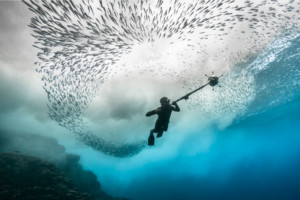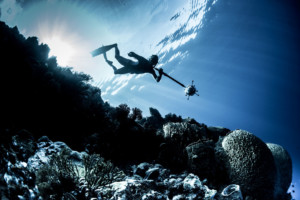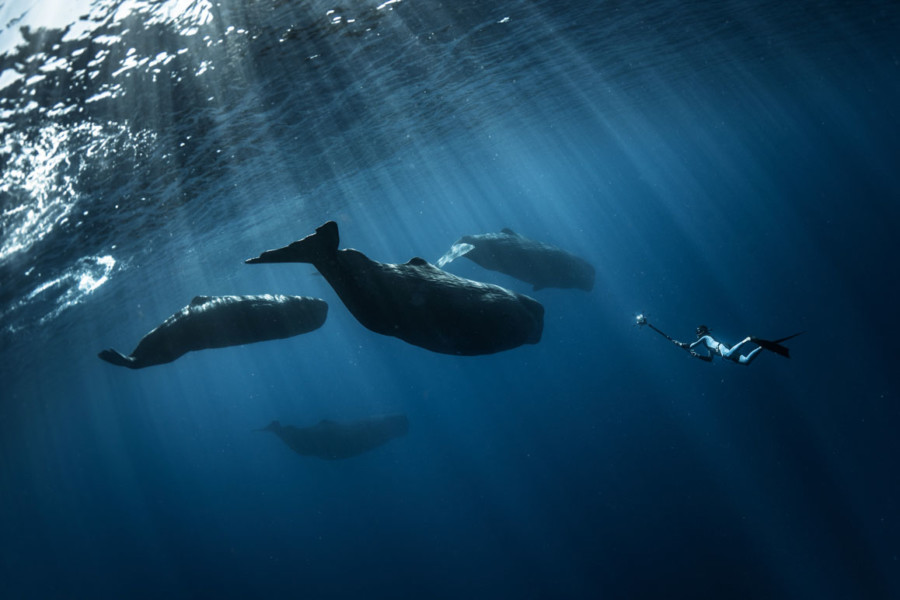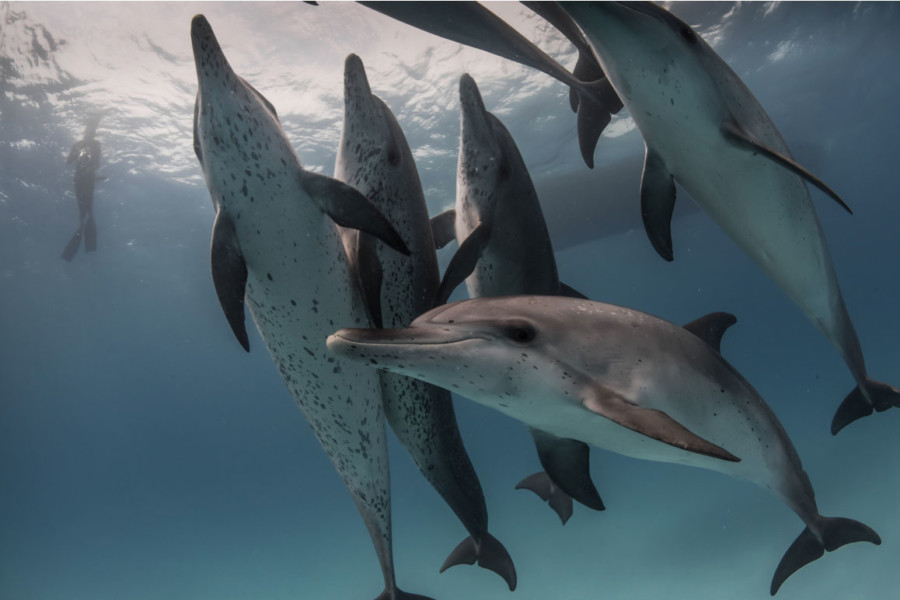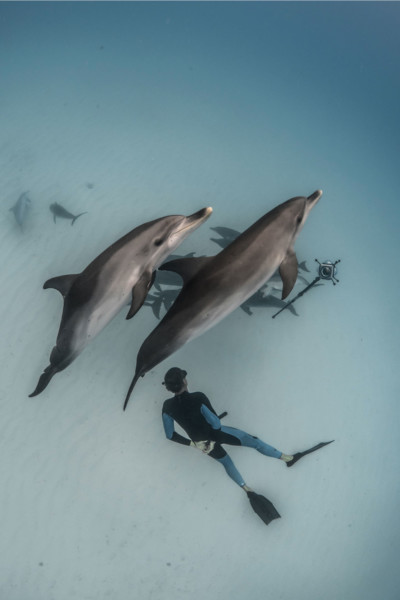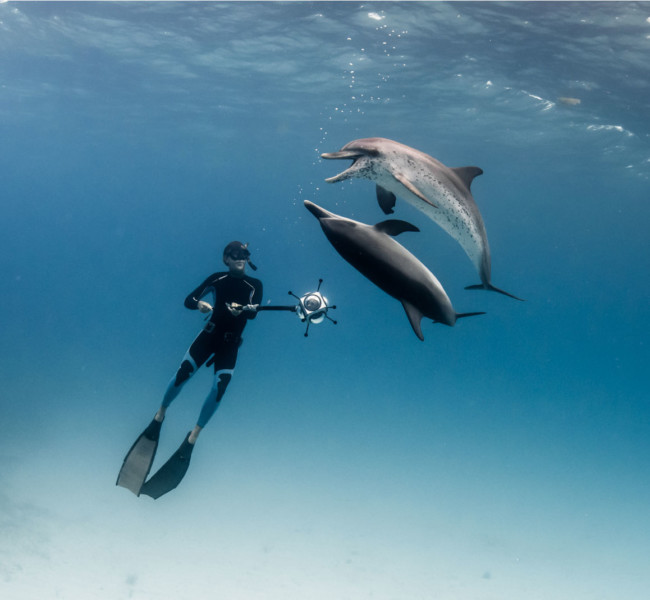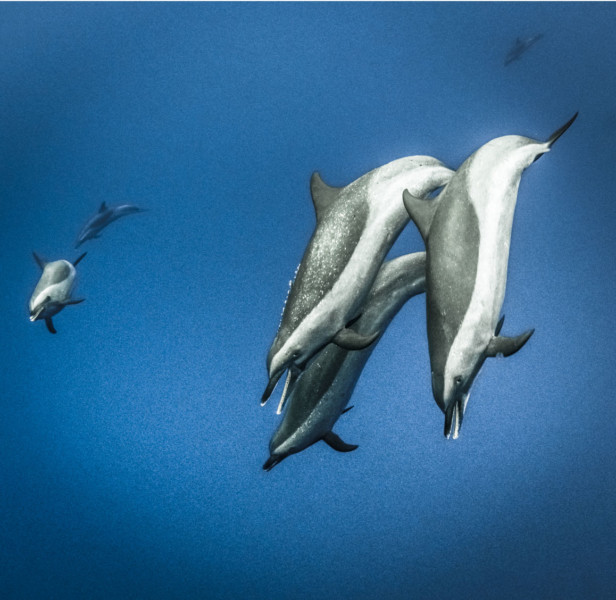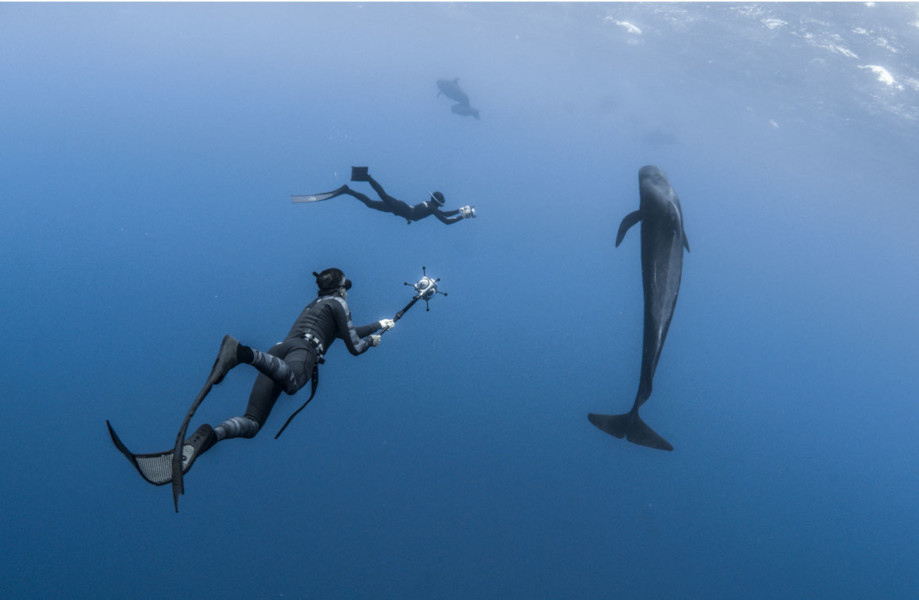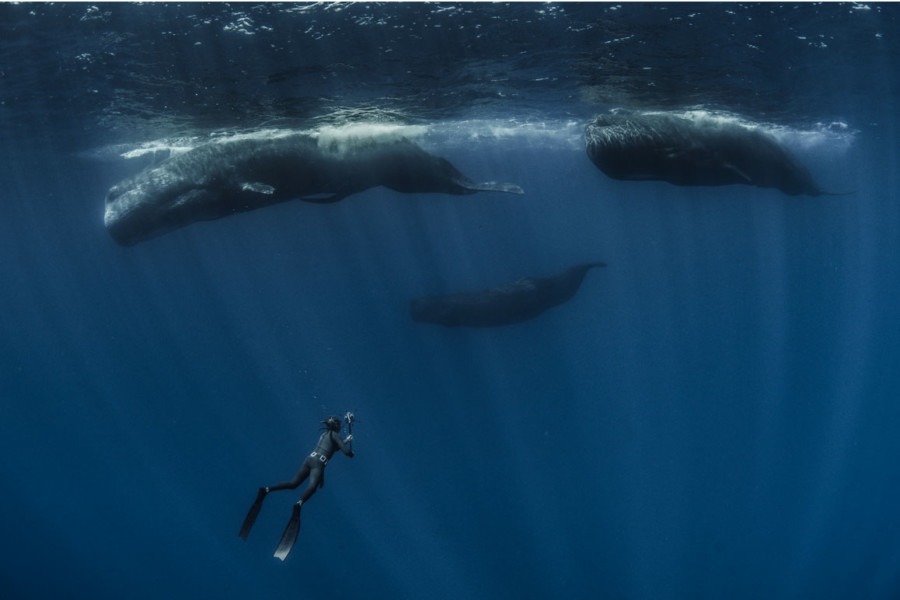[vc_row][vc_column][vc_column_text]Darewin project is an international group of audio engineers, researchers, physicists, cinematographers, journalists, freedivers, and ocean lovers who believe cetaceans have an incredible capacity for intelligence and communication.
In the past seven years, they have collected dozens of hours of wild cetacean behavior and click communication audio and video footage, the largest collection of its kind. They provide this data in an open-source platform free-of-charge to physicists, linguistic scientists, and any other professional researchers interested in better understanding cetacean echolocation and click communication.
Fred Buyle a world renowned freediver is a member of the Darewin team. He will participate to the Monaco Explorations campaign.
You’re part of the Darewin Project, which is essentially a group of free diving artists trying to decode a language?
Yes, that’s one way to put it. In fact, we are very different people with very different backgrounds. Fabrice is an engineer, and a kind of mad scientist, a very intelligent and ambitious guy who one day ran into a group of sperm whales – 10 years ago – and was totally overwhelmed by that encounter. Since then he’s been researching these animals and getting more and more into them, eventually he took a marine biology course and then earned a masters degree in marine biology, but he understood that was not enough because marine biologists usually don’t use a very wide variety of tools, and he thought there were other ways to study these animals, so he began to dive and quickly learned that free diving was a very good tool for research – and that’s about the time we met – in 2011. So, we started diving together to record videos, photos, and the sounds of these animals and at that time, Fabrice had a great idea to try to record 360 degree footage to try to match the sound with video. But back then there were no tools for 360 video, so we had to invent the tools – we put go pros together on a big rig with microphones and hydrophones, you know it was a bit of working in our garage. So, we had a few prototypes we called Octopus 1, Octopus 3, and so on. The quality was not great. But, eventually we got a proper 360 rig and as we were recording a lot of footage everywhere in the world, we got a lot of interest from people wanting the 360 filming capabilities we had combined with free diving, and this is how we became involved in a lot of projects, and how we became connected with the Oceanographic Museum in Monaco.
[/vc_column_text][/vc_column][/vc_row][vc_row][vc_column][vc_column_text]
Free diving is the key to getting good sound?
Well, free diving is a really good tool because it’s easy to put in place. Even if you don’t free dive, just snorkel – anyone can get in the water and without diving deep they can take a camera and gather footage and sound recordings. On top of that, free diving is a really good asset because you don’t make noise, so the animals are more likely to approach you instead of you having to chase them. Sometimes they even get curious, and we want them to be curious, we want this kind of encounter between the animals and us, it makes a big difference. With research you want to try not to interfere with the animal behavior, and for us its very important to see how the animals react toward us and which kind of sounds they make when they interact with us.
What is the ultimate goal for the Darewin Project?
We know these animals can communicate, so much research has been done to show that they are able to communicate, but we want to show how advanced their communication is. The ultimate goal is to be able to highlight these animals as very intelligent beings. We don’t believe we will be able to crack the code and understand what they say word for word, and be able to answer, that would be a cherry on the cake, but we really do want to show how intelligent these animals are – there are so many intelligent animals in the ocean that we must protect. By doing this work, I think if we can show that they are very intelligent, clever and engage in social behavior and have very strong social structures in their group, people will be more prone to protect them and be interested in their protection, and this is the real goal.
And your recordings are available to anyone who wants them, and you’ve offered this data since 2011?
Yeah, from the beginning the idea was to collaborate and offer and open source platform. Because we quickly understood that if you do this kind of work and keep everything for yourself, you lose so much potential. By having an open source database of our work, it means we have more opportunities for partnerships and more opportunities to get in the water with these animals and record sounds and footage – so yeah, from the beginning this open source platform was the main idea.
Partnering with Monaco Explorations will help with this goal?
Absolutely. What we really need to achieve is that 360 footage and sound in the center of a big pod of sperm whales when they are communicating. This is what we need to record, and it’s extremely difficult to get the right situation, the right timing, the gear all ready – it’s quite difficult. In fact, we have been able to be in the center of the pod a few times over the years but never with all of the gear ready. This part takes time, and we don’t have a lot of funding, so we are finally in a place where we are fully equipped with gear, and this is really why it’s important now to have as many opportunities to be on the sea as possible, and this is what Monaco Explorations is offering us.
You’re a Professional Free Diver?
I spent years as a professional athlete, as a free diver, living of off sponsorship and competition and all of that, but in the off season, in winter I found myself still trying to connect with marine life – whales, sharks, anything. In 2004 I stopped competing but the year before that I had bought an underwater camera just to gather some memories from my time competing and my friendships, but quickly my pictures began to sell and a second career began somewhat naturally. With this underwater photography I got in touch with a team of marine biologists to document their work and they realized that I was also a free diver and could help them with this particular set of skills. So, the first time I helped in a marine biology project was an initiative to protect hammerhead sharks in Malpelo Island. They had contacted me because they were having trouble with these sharks who were very shy and skittish and they asked me if I thought I could go down as a free diver and place tags on the animals, and on my first trip I think I tagged 30 sharks in one week – it worked really well. So I began to develop more equipment and skills, and I continued to have opportunities to help marine biologists in their work. All of this was volunteer work; it was a way for me to kind of give back to the ocean that gave me everything I had. I spent a few weeks per year doing this kind of work for scientists who usually don’t have big budgets or exposure, so I did the job and made sure I filmed and gave them footage so they could advertise their work, or help them try to fundraise and bringing people together.
And you were inspired to just keep going down this path?
You know, I got so tired of seeing photos of dead whales, dead marine life in the media. It’s boring and defeating. People get the idea that they can’t make a difference, that it’s too late and this isn’t the case. I realized that what would be more motivating and moving for people would be imagery of these animals alive, and interacting with human beings, together being mutually curious of each other. I think people are really drawn to these images because they are not common and it seems impossible for most people to imagine they could have this kind of interaction. I believe this positive and hopeful, wondrous imagery is much more powerful than images of dead animals. In my talks and articles, I always say that we need to reconnect humans with this specific aspect of nature, these animals, and I loved to learn that the theme of Monaco Explorations is reconnecting humanity with the sea. I agree strongly with this idea and believe that it is truly the way to continue a strong movement to protect our seas.[/vc_column_text][/vc_column][/vc_row]
